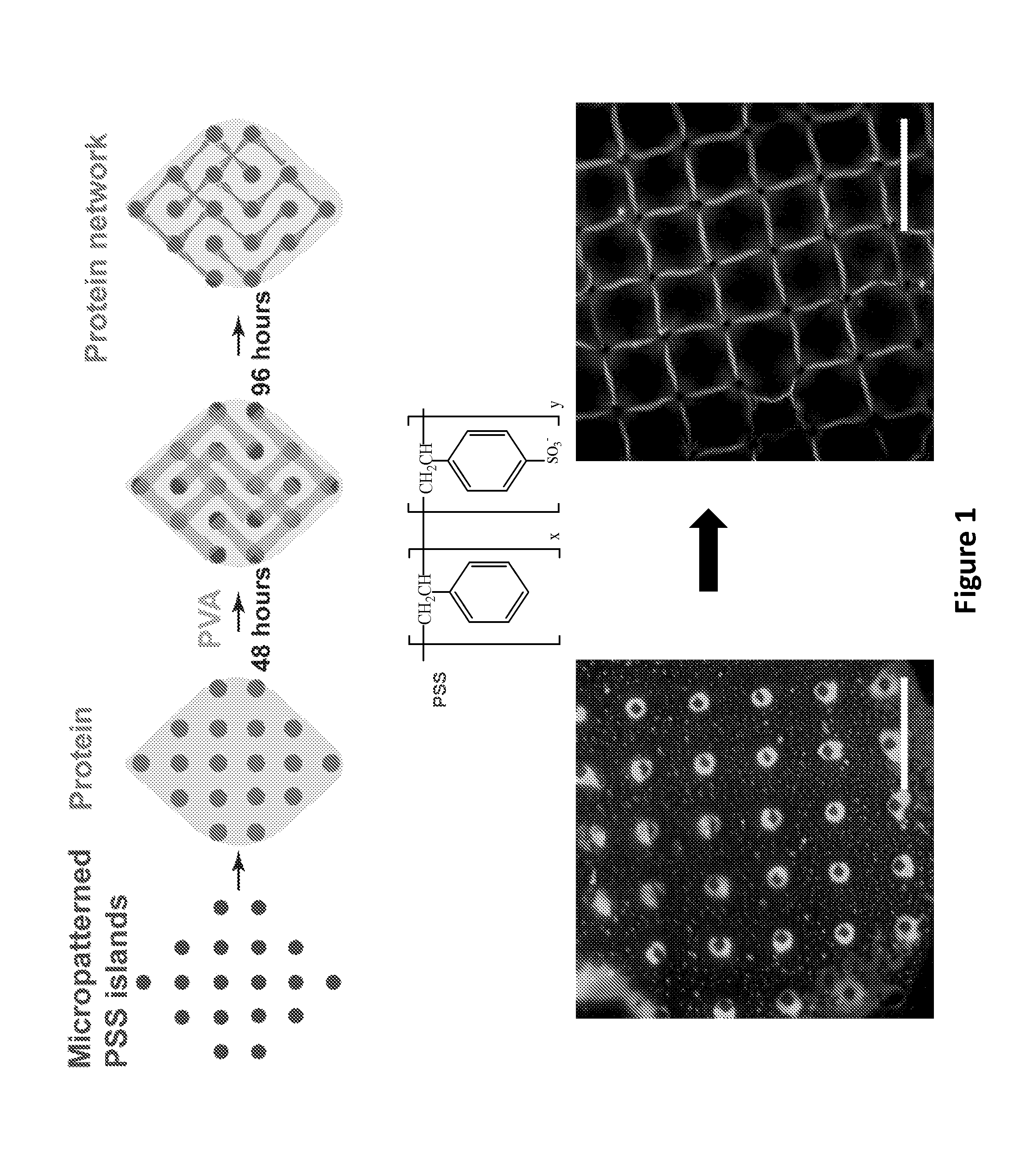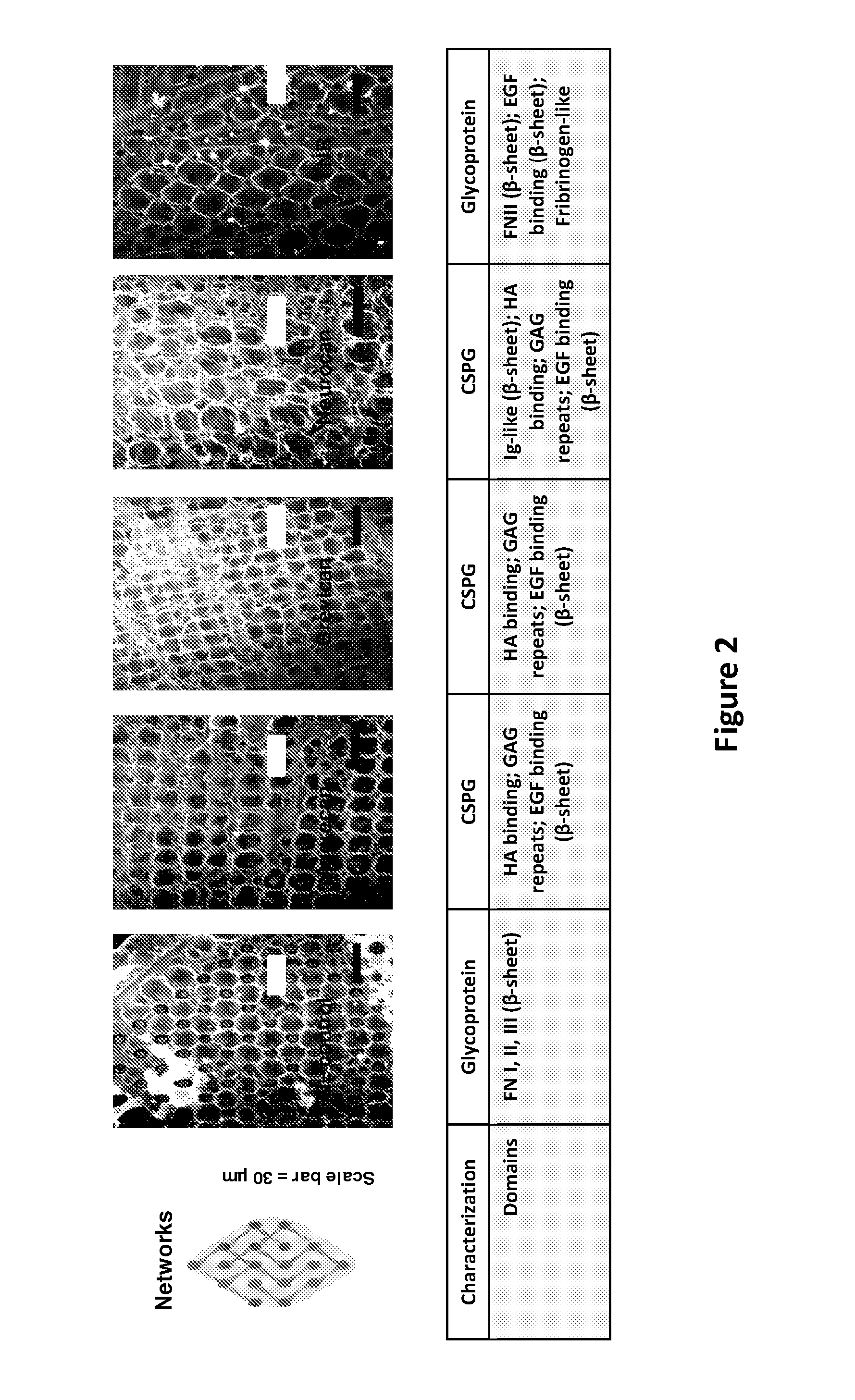Cell-free in vitro models for traumatic brain injury and methods for preparation and use thereof
a cell-free, in vitro technology, applied in the direction of material strength using tensile/compressive forces, animal/human proteins, chemistry apparatuses and processes, etc., can solve the problems of traumatic brain injury, violent blow or jolt to the head or body, traumatic brain injury,
- Summary
- Abstract
- Description
- Claims
- Application Information
AI Technical Summary
Benefits of technology
Problems solved by technology
Method used
Image
Examples
example 1
An In Vitro Model of Non-Penetrating Traumatic Brain Injury
[0069]The extracellular matrix (ECM) is the stabilizing structure of the brain. Organized ECM structures have been identified at perineuronal nets, synapses, and Nodes of Ranvier. Changes in ECM protein composition and conformation impact brain function. The perineuronal net (PNN) is a stabilizing structure in the brain. It has a negative charge due to the presence of chondroitin sulfate proteoglycans (CSPGs), such as aggregan, brevican, and neurocan; glycoproteins, such as tenascin R (TN-R); and glycosaminoglycans (GAGs), such as hyaluronic acid (HA) (FIG. 2).
[0070]The ECM protein Fibronectin, was used to generate a protein fibril network as part of an in vitro model to mimic non-penetrating traumatic brain injury (FIG. 1). The model relies on the fact that large strains on the ECM protein (e.g., fibronectin) used for the network formation can cause domain unfolding on the molecular level and plastic deformation on the fibr...
example 2
Screening of Compounds for Treating or Preventing a Non-penetrating Traumatic Brain Injury
[0076]The in vitro model of a non-penetrating traumatic brain injury described in Example 1 may be used in a method for identifying a compound useful for preventing or treating a non-penetrating traumatic brain injury. The protein fibril network of the in vitro model is contacted with a test compound, and incubated for a period of time. A stretching force is next applied to the protein network. Confocal microscopy images of the network are acquired both before and after applying the stretching force. Changes in, for example, the geometry of the network are determined by computing cross-correlation of pixel intensities between the pre-stretch and the post-stretch images. A compound that is able to preserve the pre-stretch structure, e.g., geometry, of the protein network, or that results in only a minimal change to the pre-stretch structure, e.g., geometry, (i.e., a cross-correlation value of 1 ...
PUM
| Property | Measurement | Unit |
|---|---|---|
| strain rate | aaaaa | aaaaa |
| distance | aaaaa | aaaaa |
| mol % | aaaaa | aaaaa |
Abstract
Description
Claims
Application Information
 Login to View More
Login to View More - R&D
- Intellectual Property
- Life Sciences
- Materials
- Tech Scout
- Unparalleled Data Quality
- Higher Quality Content
- 60% Fewer Hallucinations
Browse by: Latest US Patents, China's latest patents, Technical Efficacy Thesaurus, Application Domain, Technology Topic, Popular Technical Reports.
© 2025 PatSnap. All rights reserved.Legal|Privacy policy|Modern Slavery Act Transparency Statement|Sitemap|About US| Contact US: help@patsnap.com



